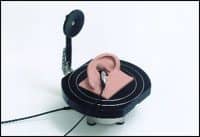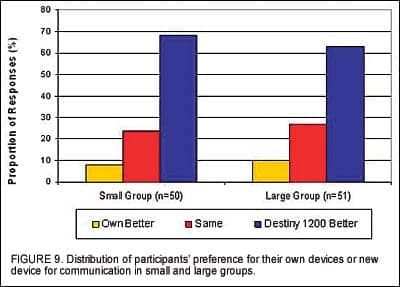
The article also included a list of 10 things to watch in the next few years. These included: 1) e-Business and e-impressions; 2) Wiser hearing aid algorithms; 3) Binaural integration in signal processing; 4) Hearing aids and testing devices with wider frequency responses; 5) Industry consolidation; 6) Demographics and aging baby-boomers; 7) Personnel shortage among professionals; 8) Remote hearing aid programming; 9) Binaural market saturation; and 10) Best-practices protocols.
Most of these items would make the list again this year, but a few merit special mention:
Open fittings and BTEs. Open-fittings have been the hot topic on the technical development and product fronts during 2006. This year, HR published nearly 20 articles related to venting, earmolds, and slim-tube, open, and receiver-in-the-ear (RITE) devices, and we devoted major portions of two issues (April and August) to open-fit hearing aids. With the advent of open fittings, BTEs have gained in popularity, constituting 43.3% of the market during the third quarter of 2006 after making up only 26.4% in 2004. The new fittings also promise to attract a younger clientele and lower the average age of first-time hearing aid purchasers (currently at 70 years old).
Hearing Aid Tax Credit. With the coming 110th Congress, some of the legislative players will change but the game remains essentially unchanged. During the 109th Congress, the Hearing Aid Tax Credit Assistance Act garnered support from 111 representatives and 17 senators—signifying its coming of age as a bill with a significant chance for passage. This Act would fundamentally change hearing health care in the United States, codifying hearing care as an essential component in public health. Along with the obvious necessity for universal newborn hearing screening, this is the one “no-brainer issue” that everyone involved in hearing care can support. For an analysis, see this month’s HR News.
Consolidation. In 2006, Phonak announced that it would acquire the GN hearing group which includes GN ReSound, Interton, GN Otometrics, and Beltone. With the rising cost of R&D and the increasing need for economy of scale, we’re likely to see more consolidation in 2007-2008.
For a more in-depth perspective on business trends in 2006, see Danielle Campbell-Angah’s article, “Trend Spotting,” and the “Looking Back; Moving Forward” section in this edition of HR. Statistics generated by the Hearing Industries Association (HIA) indicate that 2006 hearing aid sales will show a 7% increase over 2005 unit sales—a very good year when viewed in relation to historical growth—even though HR statistics suggest that these gains were not evenly distributed among manufacturers and the various segments of the dispensing field. But the market continues to expand, and the tea-leaves, tortoise shells, and nervous palms continue to suggest a bright future. Without question, there is a lot to be excited and thankful about.
As 2006 comes to a close, the staff of The Hearing Review would like to thank our readers, advertisers, and authors for their fantastic support and feedback in 2006. We wish you the very best of the holiday season.




